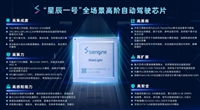Data Sheet
ADuM3223/ADuM4223
The values shown in Table 11 summarize the peak voltage for
50 years of service life for a bipolar ac operating condition, and
the maximum CSA/VDE approved working voltages. In many
cases, the approved working voltage is higher than 50-year
service life voltage. Operation at these high working voltages
can lead to shortened insulation life in some cases.
POWER CONSUMPTION
The supply current at a given channel of the ADuM3223/
ADuM4223 isolator is a function of the supply voltage,
channel data rate, and channel output load.
For each input channel, the supply current is given by
I
DDI = IDDI(Q)
f ≤ 0.5fr
f > 0.5fr
The insulation lifetime of the ADuM3223/ADuM4223 depends
on the voltage waveform type imposed across the isolation
barrier. The iCoupler insulation structure degrades at different
rates depending on whether the waveform is bipolar ac, unipo-
lar ac, or dc. Figure 24, Figure 25, and Figure 26 illustrate these
different isolation voltage waveforms.
IDDI = IDDI(D) × (2f – fr) + IDDI(Q)
For each output channel, the supply current is given by
I
DDO = IDDO(Q)
DDO = (IDDO(D) + (0.5) × CLVDDO) × (2f – fr) + IDDO(Q)
f > 0.5fr
f ≤ 0.5fr
I
A bipolar ac voltage environment is the worst case for the
iCoupler products and is the 50-year operating lifetime that
Analog Devices recommends for maximum working voltage. In
the case of unipolar ac or dc voltage, the stress on the insulation
is significantly lower. This allows operation at higher working
voltages while still achieving a 50-year service life. Any cross-
insulation voltage waveform that does not conform to Figure 25
or Figure 26 should be treated as a bipolar ac waveform, and its
peak voltage should be limited to the 50-year lifetime voltage
value listed in Table 12.
where:
DDI(D), IDDO(D) are the input and output dynamic supply currents
per channel (mA/Mbps).
CL is the output load capacitance (pF).
DDO is the output supply voltage (V).
f is the input logic signal frequency (MHz, half of the input data
rate, NRZ signaling).
fr is the input stage refresh rate (Mbps).
DDI(Q), IDDO(Q) are the specified input and output quiescent supply
I
V
I
currents (mA).
Note that the voltage presented in Figure 25 is shown as sinu-
soidal for illustration purposes only. It is meant to represent any
voltage waveform varying between 0 V and some limiting value.
The limiting value can be positive or negative, but the voltage
cannot cross 0 V.
To calculate the total supply current, the supply currents for
each input and output channel corresponding to IDD1, IDDA, and
I
DDB are calculated and totaled.
Figure 9 provides total input IDD1 supply current as a function
of data rate for both input channels. Figure 10 provides total IDDA
or IDDB supply current as a function of data rate for both outputs
loaded with 2 nF capacitance.
RATED PEAK VOLTAGE
0V
Figure 24. Bipolar AC Waveform
INSULATION LIFETIME
All insulation structures eventually break down when subjected
to voltage stress over a sufficiently long period. The rate of insu-
lation degradation is dependent on the characteristics of the
voltage waveform applied across the insulation. In addition
to the testing performed by the regulatory agencies, Analog
Devices carries out an extensive set of evaluations to determine
the lifetime of the insulation structure within the ADuM3223/
ADuM4223.
RATED PEAK VOLTAGE
0V
Figure 25. Unipolar AC Waveform
RATED PEAK VOLTAGE
Analog Devices performs accelerated life testing using voltage
levels higher than the rated continuous working voltage. Accel-
eration factors for several operating conditions are determined.
These factors allow calculation of the time to failure at the actual
working voltage.
0V
Figure 26. DC Waveform
Rev. 0| Page 17 of 20












 三星深化印度制造布局,供应链本地化进程加速
三星深化印度制造布局,供应链本地化进程加速

 芯擎科技“星辰一号”自动驾驶芯片点亮成功,2025年量产在即
芯擎科技“星辰一号”自动驾驶芯片点亮成功,2025年量产在即

 纳微科技震撼发布GaNSlim革新氮化镓功率芯片
纳微科技震撼发布GaNSlim革新氮化镓功率芯片

 意法半导体发布第四代SiC技术,助力电动汽车电驱
意法半导体发布第四代SiC技术,助力电动汽车电驱
